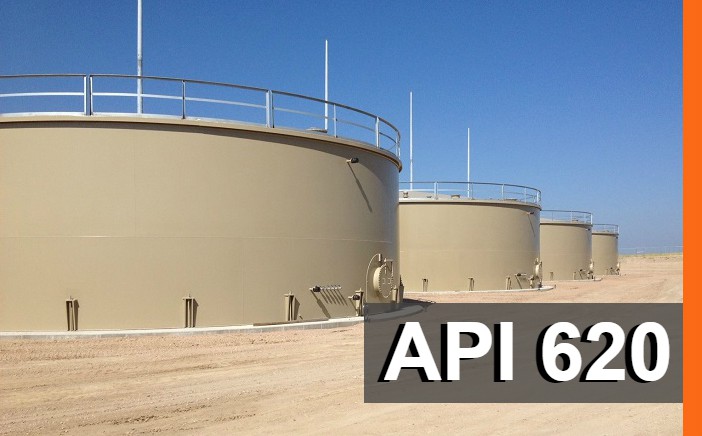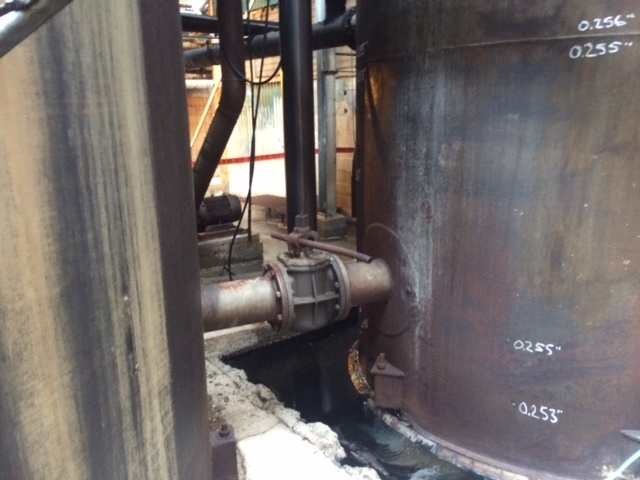Exploring API 650 Welding Inspection Standards for Reliable Industrial Construction
Just How Welding Evaluation Works: A Comprehensive Overview for Professionals
Welding assessment plays a crucial duty in guaranteeing the safety and reliability of welded structures. It involves an organized method that consists of both aesthetic assessment and advanced testing methods. Specialists have to familiarize themselves with vital criteria and laws controling the market. Understanding the typical problems that can arise during welding is vital. This guide will certainly check out these elements carefully, supplying insights right into the processes that promote quality and honesty in welding.
Understanding the Significance of Welding Inspection
While numerous might ignore the importance of welding examination, it plays a crucial role in making certain the honesty and security of bonded frameworks. Effective welding examination determines potential flaws and problems that can jeopardize architectural toughness and cause disastrous failures. The evaluation procedure includes various methods, such as aesthetic exams, ultrasonic screening, and radiographic assessments, each adding to the total analysis of weld quality.
Along with securing the structural stability, welding inspection ensures compliance with sector criteria and client specifications. By guaranteeing that welds satisfy needed features and tolerances, assessments assist keep the dependability and longevity of elements in various applications, from construction to aerospace. A strenuous evaluation process promotes a society of top quality and liability among welders and manufacturers. Inevitably, welding inspection is not merely a step-by-step step; it is an important method that underpins the safety and security and performance of engineered systems across varied sectors.
Trick Criteria and Laws in Welding Inspection
The foundation of effective welding assessment relaxes on adherence to developed criteria and laws. Different companies, such as the American Welding Society (AWS) and the American National Criteria Institute (ANSI), stated standards that assure top quality and safety in welding techniques. Secret standards, such as AWS D1.1 for architectural welding and ASME Section IX for pressure vessels, provide extensive criteria for welding inspections, treatments, and qualifications. Regulative frameworks, consisting of those from the Occupational Security and Health Management (OSHA), required safety techniques and employee defenses in welding atmospheres. Conformity with these requirements is important for achieving consistent weld high quality and lessening the risk of failures. Additionally, global requirements like ISO 3834 additionally enhance global uniformity in welding examination techniques. Professionals need to stay notified regarding these policies to assure that their assessment methods align with sector expectations and lawful requirements, thus securing both personnel and architectural integrity.
First Prep Work and Visual Assessment Techniques

Efficient welding evaluation starts with a detailed pre-inspection checklist that ensures all needed conditions are met prior to the actual evaluation happens. Following this preparation, visual flaw recognition plays a vital duty in evaluating weld quality, permitting assessors to find problems such as splits or incorrect fusion. Together, these strategies create the structure for a successful welding examination procedure.
Pre-Inspection List
Before beginning any kind of welding examination, a complete pre-inspection checklist is important to guarantee that all necessary preparations are finished which visual evaluation techniques are successfully utilized. Key aspects of this checklist include validating the welding treatment specification (WPS), making certain all tools is calibrated and in good working problem, and verifying that the examiner possesses the needed accreditations. In addition, it is important to evaluate any kind of previous assessment reports and to assess the workplace for security threats. The inspector needs to additionally validate that all appropriate documentation, such as material certifications and assessment records, is easily available. Finishing this checklist aids to establish a solid foundation for a successful inspection procedure, enhancing the dependability of the results gotten.
Visual Defect Recognition
An effective aesthetic defect identification procedure begins with careful initial prep work and the application of recognized aesthetic inspection strategies. Examiners should guarantee that the welding area is well-lit and tidy, as sufficient presence is essential for spotting defects. A detailed assessment of the weld joint's surface area permits the identification of gaps, such as cracks, damages, or porosity. Inspectors commonly make use of tools like multiplying glasses or mirrors to improve their sight of hard-to-reach locations. Furthermore, they need to know with the details welding requirements and standards pertinent to the project. By adhering to these approaches, inspectors can properly determine possible concerns, securing the honesty of the weld and compliance with industry standards.
Non-Destructive Screening Techniques: An Overview
Non-destructive testing (NDT) methods play a vital function in the welding assessment procedure by making certain the integrity and dependability of welded frameworks without creating any damages (API 650 Welding Inspection). These methods allow examiners to review the quality of welds while preserving the components being taken a look at. Typical NDT approaches consist of ultrasonic screening, radiographic testing, magnetic particle testing, and dye penetrant testing, each offering one-of-a-kind benefits
Ultrasonic testing uses high-frequency acoustic waves to discover inner imperfections, while radiographic screening makes use of X-rays or gamma rays to imagine the interior structure of welds. Magnetic fragment screening exposes surface area and near-surface flaws by applying a magnetic field and iron bits to the weld location. Color penetrant screening highlights surface-breaking imperfections via the application of a colored dye. Together, these NDT approaches provide critical insights into weld quality, making it possible for specialists to make enlightened decisions relating to safety and conformity in welding applications.
Usual Flaws and Their Ramifications
Recognizing common issues in welded joints is important for maintaining architectural integrity and safety. Numerous issues can develop during the welding procedure, each bring potential implications for the general efficiency of the framework. Porosity, identified by little gas pockets within the weld, can damage the joint and compromise its load-bearing capacity. Cracks may develop due to thermal stress and anxiety or improper cooling, leading to potential failing under stress. Incomplete fusion happens when the weld metal does not completely bond with the base product, causing weak joints that might not hold up against designated loads. Undercutting, where the base metal is deteriorated, can likewise reduce the efficient cross-section of the weld. In addition, extreme reinforcement can produce stress focus that could cause failing. Identifying these flaws without delay enables restorative actions, making certain the long life and dependability of welded frameworks in critical applications.
Devices and Devices Used in Welding Assessment
Effective welding assessment depends on a range of specialized devices and devices to guarantee the quality and integrity of bonded joints. Important instruments include visual examination tools, such as multiplying borescopes and glasses, which allow inspectors to very closely analyze welds for surface area flaws. Non-destructive screening (NDT) techniques, such as ultrasonic testing, radiographic testing, and magnetic fragment testing, are fundamental for recognizing interior imperfections without harming the product.
Dimension tools, consisting of calipers and weld evaluates, aid evaluate measurements and identify conformity with requirements. Additionally, hardness testers examine the mechanical residential or commercial properties of welded joints. Individual safety devices (PPE) is likewise important, protecting the security of inspectors while operating in potentially unsafe atmospheres (API 650 Welding Inspection). Each tool serves a details objective, collectively boosting the efficiency of welding evaluation and adding to the integrity of finished projects
Often Asked Questions
What Credentials Are Needed to Come To Be a Welding Examiner?
To end up being a welding examiner, individuals commonly require relevant certifications, such as AWS sites CWI or CSWIP, together with experience in welding processes, engineering concepts, and understanding of inspection strategies, security criteria, and relevant codes.
Exactly How Usually Should Welding Inspections Be Performed?
Welding assessments should be conducted consistently, ideally at numerous job phases, consisting of pre-weld, during-weld, and post-weld. Regularity may likewise depend on market requirements, project specs, and the intricacy of the welds included.
Can Welding Defects Be Fixed After Examination?

Yes, welding flaws can frequently be fixed after examination. Depending on the severity and kind of problem, ideal approaches such as remodeling or additional welding may be employed to bring back architectural honesty and security compliance.
What Industries Require Regular Welding Inspections?

Various sectors, including building and construction, production, aerospace, and automobile, require routine welding More Bonuses inspections - API 650 Welding Inspection. These evaluations ensure adherence to safety and security requirements and high quality control, lessening risks related to architectural stability and operational efficiency in welded elements
Exactly how Do I Pick a Welding Examination Solution?
To choose a welding assessment solution, one should consider credentials, experience, qualifications, and industry credibility. Additionally, reviewing consumer evaluations and guaranteeing the service fulfills appropriate criteria can help guarantee top quality assessments and trusted results.

While several may underestimate the significance of welding examination, it plays an important function in guaranteeing the honesty and safety and security of bonded frameworks. Trick criteria, such as AWS D1.1 for structural welding and ASME Area IX for pressure vessels, provide thorough criteria for welding certifications, procedures, and evaluations. Effective welding inspection starts with a comprehensive pre-inspection list that ensures all needed conditions are satisfied before the real assessment takes location. Prior to commencing any type of welding examination, a thorough pre-inspection checklist is necessary to guarantee that all required prep work are finished and that visual examination methods are successfully employed. Non-destructive testing (NDT) methods play a necessary duty in the welding examination process by guaranteeing the integrity and dependability of bonded frameworks without try these out causing any kind of damage.